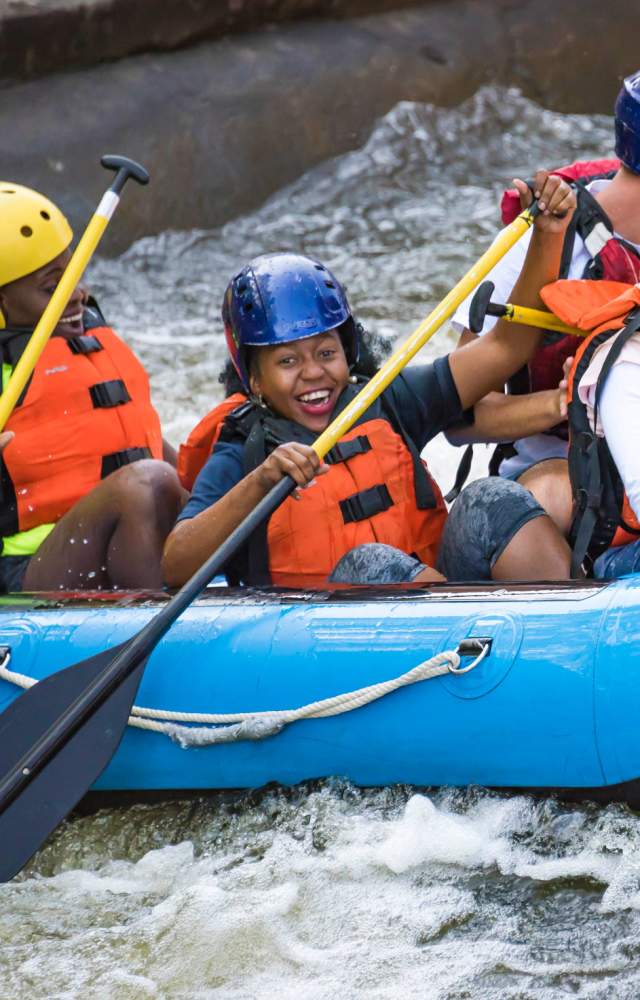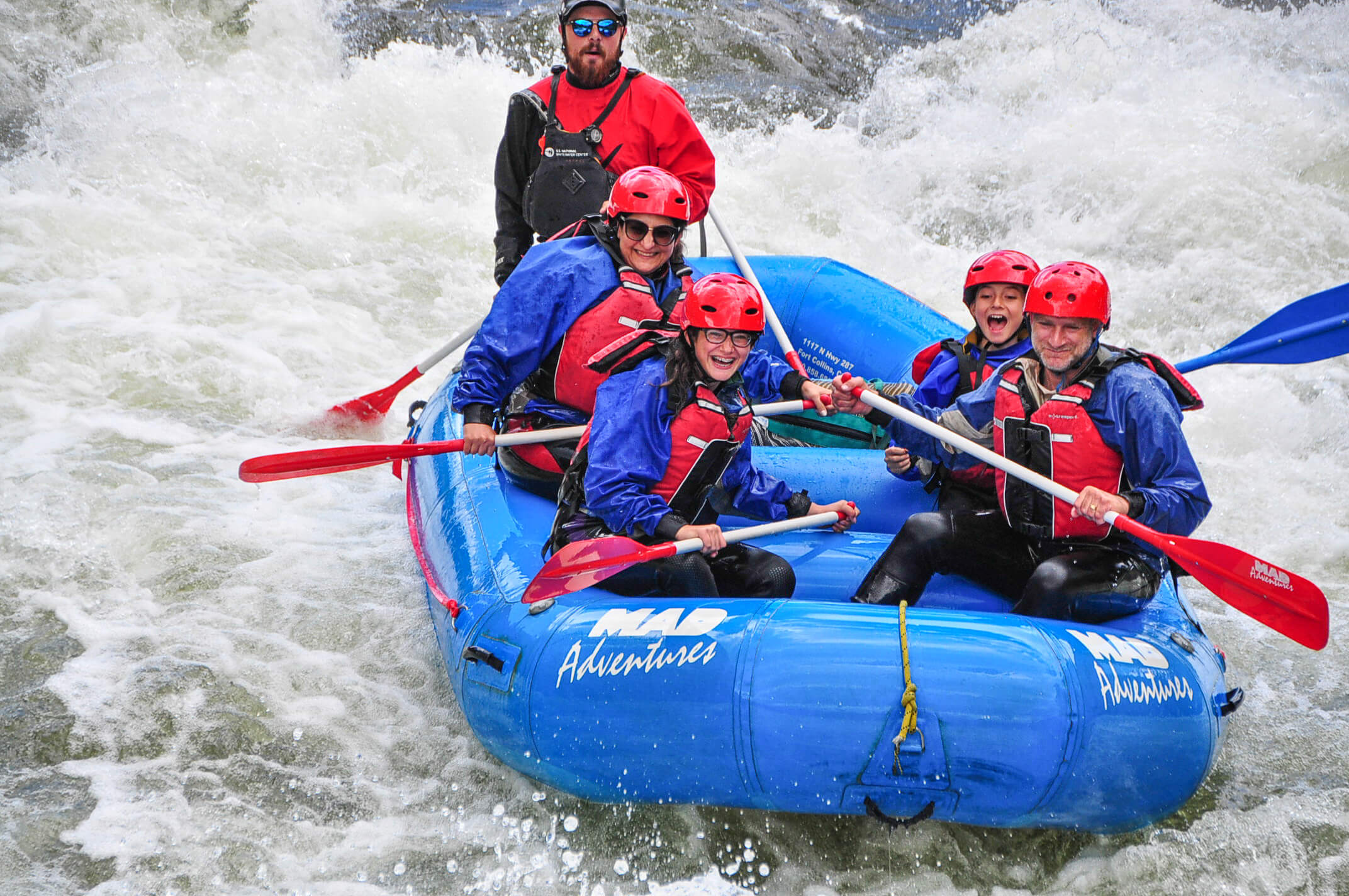Discover the very best White Water Rafting Colorado Has to Offer
Discover the very best White Water Rafting Colorado Has to Offer
Blog Article
Essential Skills for Water Rafting
Understanding the art of water rafting needs a mix of accurate skills and knowledge to navigate the uncertain currents of rivers, making it a thrilling yet potentially hazardous activity. As enthusiasts tailor up to start their following adventure, it is critical to gear up oneself with essential proficiencies that exceed just paddling. From recognizing the complexities of river characteristics to swiftwater rescue techniques and smooth group interaction, the journey down the river requires a mix of know-how and adaptability. With security methods functioning as a keystone, participants are confronted with a complex obstacle that necessitates a careful method and steady emphasis.
Paddling Techniques
Grasping effective paddling methods is vital for browsing water rafts safely and efficiently. Appropriate paddling not only propels the plethora onward yet additionally aids in guiding and maneuvering with varying water conditions. One fundamental method is the forward stroke, where paddlers dip the blade totally right into the water and draw it back alongside the plethora to create propulsion. Timing and control are vital to ensure that all paddlers remain in sync, making the most of the power of each stroke.
Other than the forward stroke, the draw stroke is important for making quick changes or drawing the raft better to a things. By placing the paddle blade vertical to the water's surface area and pulling the water in the direction of the plethora, paddlers can efficiently change the vessel's direction. In addition, the backstroke acts as a useful tool for supporting or slowing down the plethora when necessary.
River Reviewing
Efficient paddling strategies, such as the forward stroke and attract stroke, play an important duty in analyzing and navigating river currents, an ability called river analysis. River reading includes the capability to analyze the rate, depth, and instructions of the water flow to make educated choices while navigating rapids. By understanding just how the water moves around challenges and via different networks, rafters can select the ideal route to securely go across the river.
One key element of river reading is acknowledging numerous types of currents, including waves, swirls, and hydraulics, and comprehending how they can impact the plethora. Eddies, for instance, are areas where the water flows in a circular movement, typically giving opportunities for remainder or calculated maneuvers. Waves can show the presence of challenges or rocks, needing quick changes in paddling strategy. Hydraulics, commonly known as "holes," are areas where water recirculates back upstream, presenting prospective dangers to plethoras.
Mastering the skill of river reading is important for enjoyable and safe rafting experiences, making it possible for paddlers to browse tough waters with self-confidence and precision.

Swiftwater Rescue
Recognizing swiftwater rescue techniques is important for water rafting enthusiasts to react successfully in emergency situation scenarios on fast-flowing rivers. Swiftwater rescue involves a set of specialized skills view publisher site and understanding focused on securely extracting individuals from swift-moving water. One essential aspect of swiftwater rescue is acknowledging the threats existing in fast-flowing rivers, such as filters, undercut rocks, and solid currents, to plan and implement effective rescue operations.
Appropriate tools is necessary for swiftwater rescue, consisting of toss bags, rescue ropes, helmets, and personal flotation devices. Rafting enthusiasts should be skilled at utilizing this tools in high-stress scenarios to make certain the safety and security of themselves and others. In addition, swiftwater rescue techniques frequently involve teamwork and coordination amongst rafters to implement complicated rescue maneuvers successfully.
Learning swiftwater rescue is extremely recommended for individuals participating in water rafting tasks, as it outfits them with the required abilities to take care of emergencies promptly and successfully. White Water Rafting Colorado. By recognizing and exercising swiftwater rescue methods, water rafting enthusiasts can enhance their safety and security which of their fellow rafters on difficult river expeditions
Group Interaction
Effective teamwork in water rafting counts heavily on seamless interaction among staff member to guarantee collaborated and secure navigation through challenging river problems. Clear and concise interaction is vital for the success of any type of rafting expedition. Staff member should have the ability to successfully convey essential info such as paddling commands, warning signals, and navigational directions.
In the commonly unpredictable and busy atmosphere of river rafting, exact and punctual communication can mean the distinction in between a prospective disaster and an effective run - White Water Rafting Colorado. Each team member plays an essential role in the overall communication process, whether it be listening diligently to the guide's directions, passing on details to other paddlers, or signaling for aid when needed
Developing a common language and communication system prior to hitting the water is essential. This makes sure that every person is on the exact same page and understands how to communicate efficiently during the rafting trip. By promoting a society of open interaction and mutual respect, rafting teams can improve their efficiency and safety and security on the river.

Safety Protocols
In the context of water rafting, the foundation of team interaction developed throughout explorations is further enhanced via stringent adherence to security procedures. Security methods are vital in ensuring the well-being of both rafters and guides during water rafting expeditions.
An additional trick security procedure is the detailed briefing given by guides before embarking on a rafting trip. This rundown generally consists of information on paddling methods, what to do in situation of different emergency situations, and click here for more signals utilized for communication during the journey. Additionally, it is necessary to have actually assigned security kayakers accompanying the group to offer immediate assistance if required. By strictly sticking to these safety and security procedures, water rafting expeditions can be both risk-free and thrilling for all participants entailed.
Final Thought
Finally, understanding necessary skills for water rafting is critical for a safe and delightful experience on the river. Paddling methods, river reading, swiftwater rescue, group communication, and security find out here now procedures are all essential elements that add to a successful rafting journey. By honing these abilities, rafters can navigate tough waters with confidence and make certain the security of themselves and their group members.
Understanding the art of water rafting needs a mix of precise abilities and expertise to browse the unpredictable currents of rivers, making it a thrilling yet potentially dangerous task. By placing the paddle blade perpendicular to the water's surface area and drawing the water towards the boating, paddlers can effectively alter the vessel's instructions.Recognizing swiftwater rescue techniques is important for water rafting lovers to react successfully in emergency situation circumstances on fast-flowing rivers.Reliable teamwork in water rafting relies heavily on smooth communication amongst group participants to ensure collaborated and risk-free navigating with challenging river conditions.In final thought, grasping crucial skills for water rafting is essential for a enjoyable and safe experience on the river.
Report this page